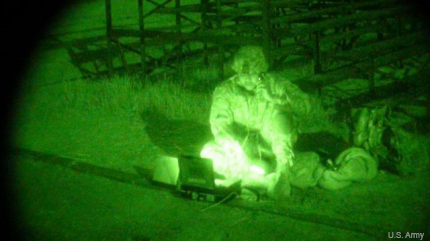As forces draw down, Army has a GRRIP on network access
The small, portable kit can be set up in less than five minutes and provides a secure satellite connection from anywhere in the world.

A troop drawn down like the one U.S. and coalition forces are going through in Afghanistan can leave some gaps in communications, as infrastructure leaves with the troops.
Army forces are avoiding that problem with a small, portable satellite communications kit that gives them a secure network connection from anywhere in the world.
The GRRIP, or Global Rapid Response Information Package, provides a Secure IP Router Network connection for voice, data and video without a line-of-sight requirement or the need local infrastructure, connecting soldiers to the CX-I (Combined Enterprise Regional Information Exchange System - International Security Assistance Force) network, the Army said.
"Lessons learned from the drawdown in Iraq taught us that as networks get disassembled, mistakes can happen; things can go down when you weren't expecting them to," said Lt. Col. Leonard Newman, product manager for the Army's Product Manager Satellite Communications. "This solution has the potential to solve many of those problems and increase the expeditionary nature of the Army for future missions in remote areas or involving coalition forces."
About the size of a small suitcase, though a little more square, the GRRIP can be up and running in less than five minutes and can provide both secure and non-secure communications in any environment.
The other side of the remote-access equation is network availability. The Warfighter Information Network – Tactical Network Operations Center at Fort Dix, N.J., went live in late March with a new CX-I enclave that will support operations in Afghanistan during the drawdown. CX-I access in Afghanistan has been delivered by a commercial provider under a contract that is due to soon run out. In addition to ensuring seamless coverage, the new enclave will also save money by consolidating the Afghanistan Network Operations Center and associated services into the WIN-T SNOC, the Army said.
When they return from Afghanistan, the Army will likely find plenty of other uses for GRRIPs. They can be configured for SIPRNet, the non-classified NIPRNet or the CX – Korea network and would be useful in emergency response situations as well as anywhere else where communications are difficult, the Army said.
"You don't need an infrastructure; you don't need a building;” Newman said, “as long as you have this kit with you, you have connection to CENTRIX-I."




